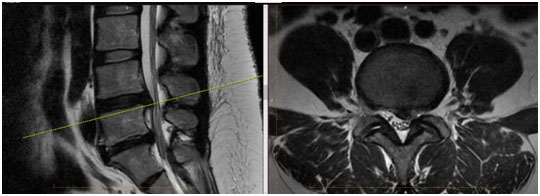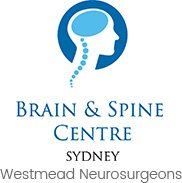Lumbar Microdiscectomy
Microdiscectomy is a surgical procedure employed to relieve the pressure over the spinal cord and/or nerve roots, caused by a herniated intervertebral disc. A herniated disc, common in the lower back (lumbar spine) occurs when the inner gelatinous substance of the disc escapes through a tear in the outer, fibrous ring (annulus fibrosus). This may compress the spinal cord or the surrounding nerves, resulting in pain, sensory changes, or weakness in the lower extremities. A microdiscectomy is usually indicated for patients with herniated lumbar disc, who have not found adequate pain relief with conservative treatment. This surgical procedure involves use of microsurgical techniques to gain access to the lumbar spine. Only a small portion of the herniated disc that compresses the spinal nerve is removed.

When to operate?
Most patients that suffer a herniated/prolapse/ruptured/slipped disc should have a period of conservative non-surgical treatment. This may include:
- Reduced high impact activities
- Time off work
- Analgesia
- Anti-inflamatories(egNeurofen, Voltaren, Celebrex, Mobic)
- Anti-convulsants(egPregabalin and Gabapentin)
- Anti-depressants(egAmitriptyline, Nortriptyline)
- Time to recover/heal by natural means
With conservative non-surgical treatment, more than 70% of patients will experience a reduction and improvement of symptoms. Even weakness of the foot and ankle can see a recovery within 4 weeks of the onset. Physiotherapy and focused exercises for weakened muscle is recommended.
The role for physiotherapy, exercise physiologist, chiropractic, osteopathy, remedial massage, and acupuncture is usually ineffective for nerve pain and numbness, but can be beneficial for muscle weakness, pain and spasms.
Another alternative to treat severe nerve pain is the use of steroid injection in the form of cortisone. This may be used as an epidural block or a selective nerve root block to obtain temporary relief of the nerve pain. The response to the injection is variable and unpredictable. Some patients may experience a reduction of pain 2-5 days after the injection, lasting up to 2-4 months. There is a potential that the injection may not work at all or may not last long enough to be a useful method of improving the patient’s quality of life.
When do you need URGENT surgery?
In the presence of a herniated/prolapse/ruptured/slipped disc, URGENT surgery (within 24-36 hours) is recommended for CAUDA EQUINA symptoms. These symptomsinclude but not limited to:
- Loss of bladder and bowelsensation or control (incontinence)
- Numbness in the perianal/perineal (saddle) region (private parts)
- Severe nerve pain radiating down one or both legs
- Weakness in one or both legs
Having a foot drop and severe pain withoutchanges in bladder and bowel sensation or control (incontinence) or Numbness in the perianal/perineal (saddle) regiondoes not always require urgent surgery.
You should discuss in detail your condition with your surgeon about any red flags that will require urgent surgery.
Procedure
A microdiscectomy is performed under general anaesthesia. Your surgeon will make a small 2.5-3 cm incision in the midline over your lower back.The muscle attachments are disconnected from the bone and a retractor is placed and positioned over the level of the herniated disc. An Xray is performed to confirm the disc level of interest. A small amount of bone (about 5 cent piece) is removed with a high-speed drill to obtain access to the nerves. The affected nerve root and the adjacent disc material that is pressing on the spinal nerve is identified using microsurgical techniques. The disc bulge is enteredand any loose fragments of disc material is removed to decompress the nerve. Any free-floating fragment of disc present will be removed. Only a small amount of the total disc is removed. The incision is closed with absorbable sutures and covered with a dressing.
Postoperative Care
Following the surgery, patients will be discharged home on the same day or the next day. Post-operatively, patients are advised to gradually increase their activity. If required, physical therapy is started after two to six weeks of the surgery to improve strength and range of motion.
Benefits of microdiscectomy include:
- Rapid relief of nerve pain (partial or complete) of the affected leg (within a few days)
- Faster recovery of muscle weakness (partial or complete) of the affected leg (within a few weeks)
- Slower recovery of numbness(partial or complete) of the affected leg (within a few months)
- Any pre-surgery back pain may not improve
- Less muscle and soft tissue disruption
- Less recovery time
- Minimal postoperative pain and discomfort
- Fewer risks of complications
Risks or Complications
- Recovery from pain, weakness and numbness may not be complete
- Nerve injury resulting in new pain, weakness and numbness
- Recurrent disc herniation (up to 10%) in a 6 month period
- Spinal Fluid (CSF) leak from dural tear
- Infection, superficial ordeep
- Any pre-surgery back pain may not improve
- New back pain may result in a very small number of patients




